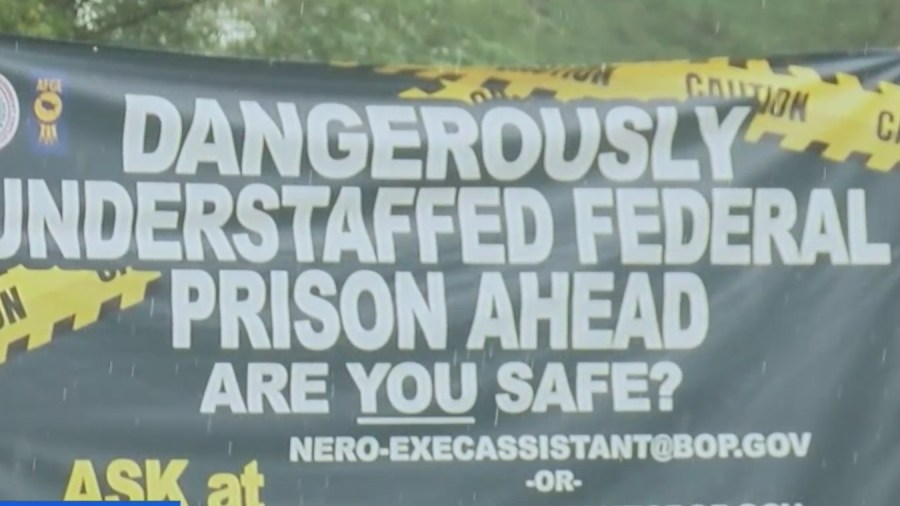Experts warn prison staff shortages put lives at risk

Editor’s note: The starting salary of Florida state prisons has been corrected.
(NewsNation) — Prisons, large and small, at the state and federal levels are seeing correctional officers leave en masse.
The prison workforce across the nation is down nearly 20%, and most of these employees have left the job in the past two years. The staffing shortage threatens officers, inmates and the public’s safety.
It’s gotten so bad that a union that represents a federal prison facing a critical staffing shortage in upstate New York found a way to grab the community’s attention to alert them to the problem.

The sign, on the side of the highway, reads that the federal prison is “dangerously understaffed” and asks the community if it feels safe.
Union leaders say they don’t want to scare the public, but just draw attention to their lack of staffing.
According to the Federal Bureau of Prisons, 3,000 officers left in 2021, and another 3,000 are set to quit or resign this year.
Shane Fausey, the national president of the Council of Prison Locals, said a lot of the decline is due to declining morale as general environmental conditions are declining. He also said staff is “exhausted” as mandatory overtime has “skyrocketed” at high-security institutions across the country.
“At one point we were first responder heroes, and now it’s like we’re the forgotten profession of law enforcement,” he said.
Fausey said his CPL’s bargaining unit is 30,000 employees strong across the Federal Bureau of Prisons.
“Currently, the Bureau has about 3,000 to 5,000 employees on board. But if you look at the numbers prior to the draconian staffing cuts of 2016 and 2017, we should be sitting right around 47, 48,000 employees. So you can see it’s 8,000 positions.”
Fausey said conditions in prisons are “deteriorating” to the point where they’re in need of immediate intervention.
“We’re studying really the long-term health effects of these horrific working conditions that our officers and employees are subjected to,” he said. “But more importantly (when you’re tired) you’re just not on edge. And when you’re not paying attention at a federal prison or supervising correctly, bad things happen.”
He added: “As the staffing numbers have declined over the last decade, we’ve seen an exponential increase in contraband, prison violence, both offender on offender and offenders toward staff.”
In Florida, Gov. Ron DeSantis has activated the Florida National Guard to address the staffing crisis at the state’s correctional facilities and to assist and train correctional officers. This comes after DeSantis increased jail workers’ pay by 60% in January.
Florida’s staffing shortage has resulted in the “temporary closure of 176 inmate dorms and suspension of 431 supervised work squads,” it said. “This shortage threatens the safety of officers, inmates and the public.”
A jail volunteer told NewsNation that morale is up due to the higher wages, but they’re still not making enough money.
So how much money do correctional officers make?
Across the nation, the median average salary of a jail worker is estimated to be $48,000 — ranging between $38,000 and $58,000, according to Salary.com.
In the state of Florida, the starting salary for state prisons is $41,000, according to Florida Department of Corrections press secretary Paul Walker.
“I think if we plan ahead and we pay our correctional officers what they’re worth, they’re endangering their lives every day, they go to work,” Fausey said. “If you pay them correctly, people want a secure, long-term career. That’s what they’re striving for.”
Meanwhile, the argument stands that someone can make just as much money working at Target, with an average salary of $50,000 with a safer work environment.










